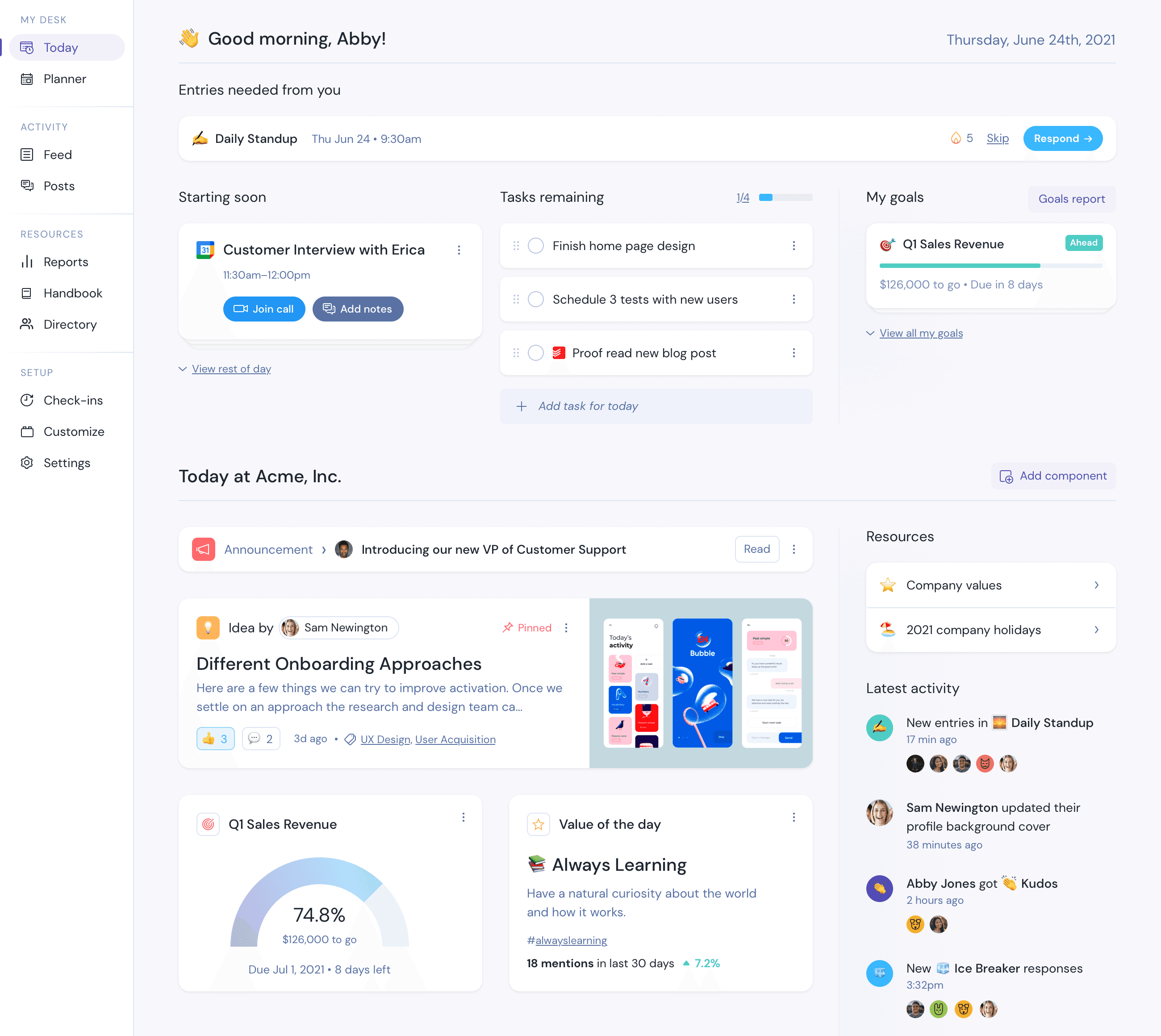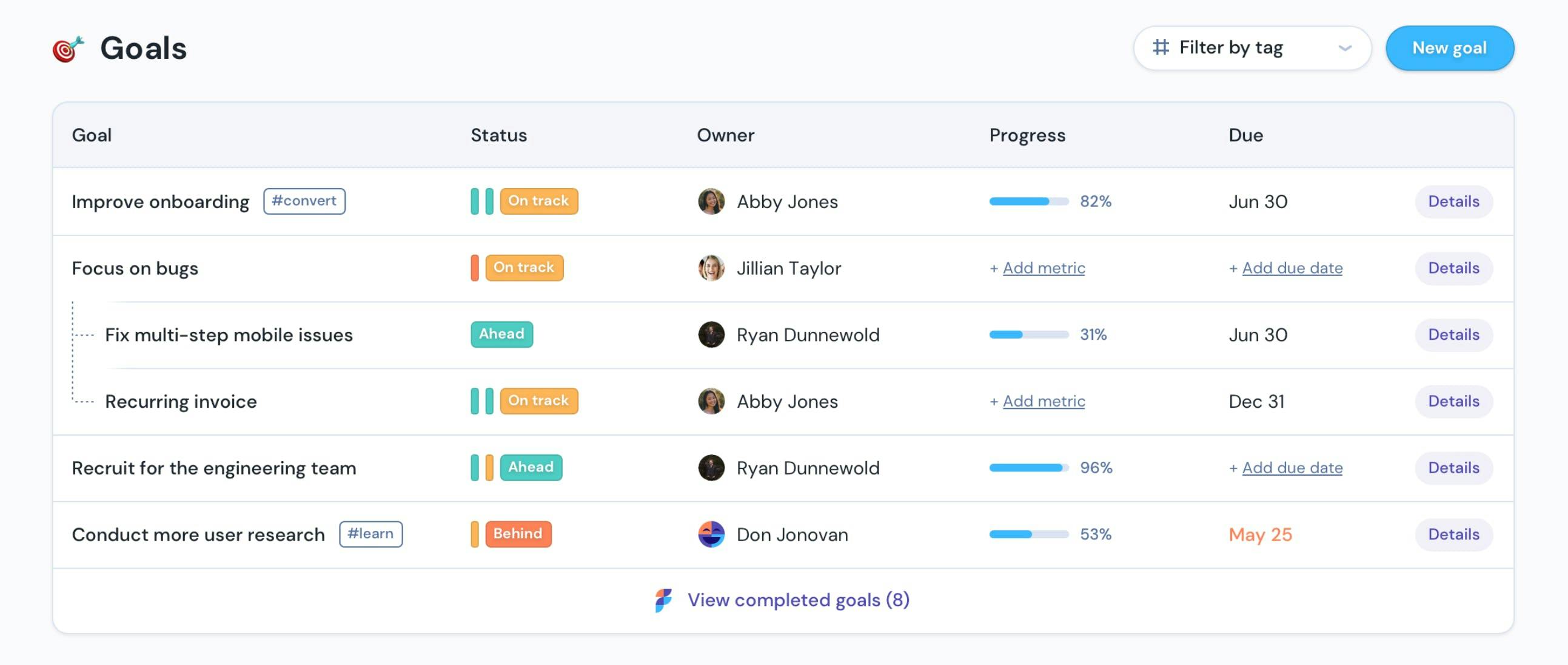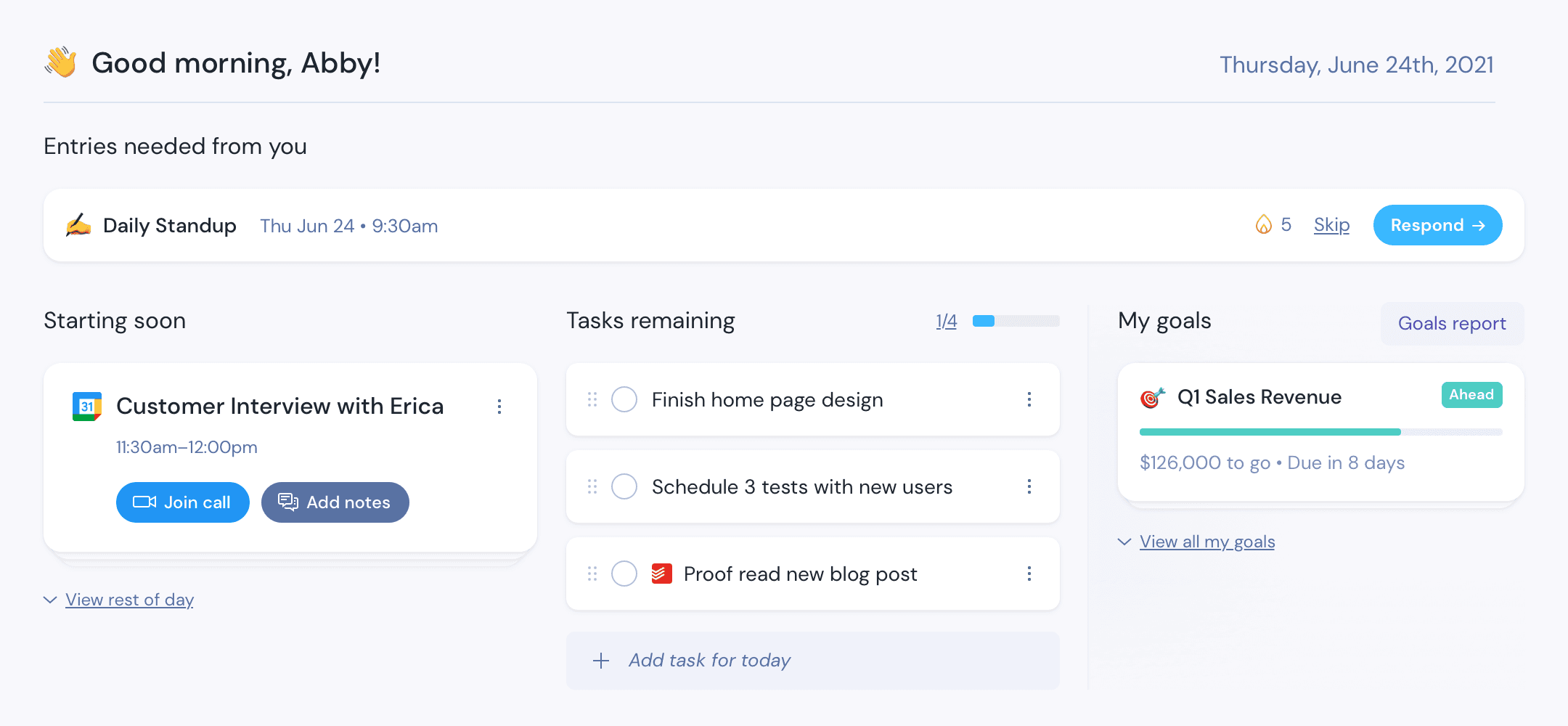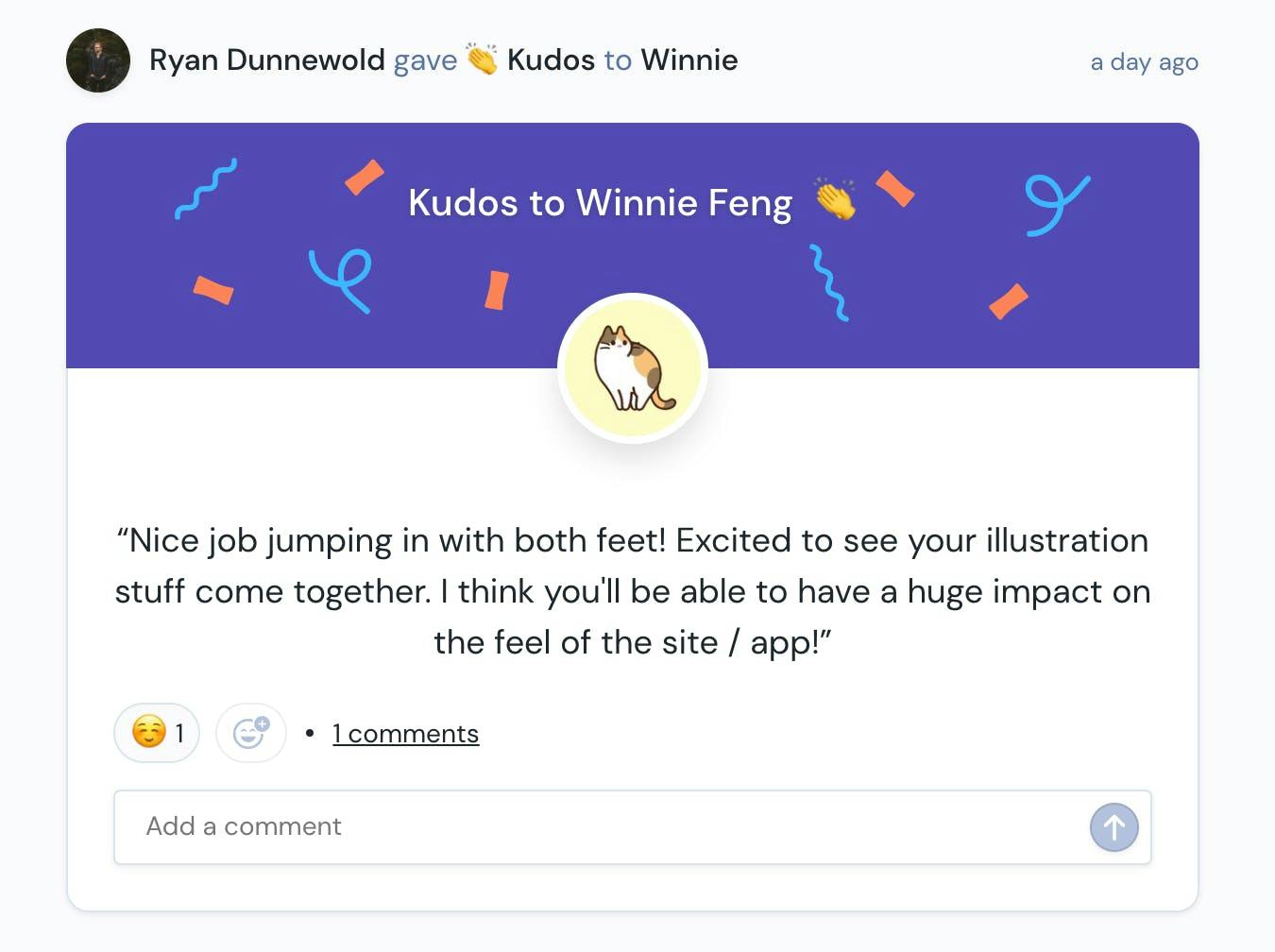7 Reasons Why Intranets Fail (And How to Fix Them)

The intranet is not a new idea.
For decades, organizations have intuitively understood that they need to centralize their most important work into one place. This has led to the rise of company portals, intranets, and other organizational "hubs" (or whatever you want to call it) that make it easier for employees to digitally "navigate" their way across the organization.
As more and more organizations make the shift to a hybrid or fully distributed working model, the company homepage is making a comeback.
Why?
Today, organizations cannot lean on a physical space (like the office) to create the context, connection, and alignment that was possible when everyone was together in the same room.
This is is why intranets tend to be adopted when a company is at its "breaking point." Things start to break when a company opens multiple offices, scales quickly, and/or offers remote work.
While most intranets have the best of intentions, the reality is that most of them fail.
In this post, we're going to explore the common challenges that organizations face with these systems, and most important, how you can solve these challenges.
With that being said, we're going to warn you that the modern intranet in a post-pandemic world is going to look quite a bit different than the intranet of 2019.
Issue #1: The average employees don't use intranets (or find value in them)
The first and most important reason why intranets fail is because they provide limited day-to-day value for the average employee. These systems are "yet another tool that I need to remember to use."
Leaders tend to adopt intranets after running into problems communicating at scale, and the decision to use one of these software providers is focused on how the platform provides value for the leader, NOT the employee.
This is a recipe for failure!
If employees don't find value in the company home, it's a recipe for limited usage and utilization, which creates mediocre outcomes and limits the organizational change that you desperately need.
This is why at Friday, we built our product with the individual in mind. For example, if someone logs into Friday, they will instantly see their meetings and tasks in one place, pulled from tools they already use.

Right below this, is what is most important for the company to share and convey. This design and feature set creates a powerful reason for the individual to use the product, which is why we see at least 7x more usage compared to other intranet products.
This usage is beneficial for leaders too, as important top-down communication is more likely to be seen! This approach is a win for the employee and a win for the leader.
Issue #2: Most intranets don't complement existing tools, like workplace chat
Covid-19 caused many organizations to adopt new tooling to work-from-anywhere. As a result, usage of workplace chat products like Slack and Microsoft Teams exploded. These tools are used all the time by employees. Employee live in these systems.
Unfortunately, most intranet products (especially those who were founded before the pandemic hit) were built before workplace chat tools exploded in popularity. As a result, there's a decent amount of product overlap between systems.
Older intranet providers end up trying to compete with workplace chat, instead of leaning into being a true complementary tool.
For example, many intranet providers allow the ability to send a direct message between teammates or post a short status update (like a Facebook post). This is redundant with workplace chat, as Slack/Teams is a much better tool for the quick back and forth communication. It's more efficient!
If you rollout an intranet with similar functionality to workplace chat, you end up creating bloat and reducing the likelihood that your organization will use the tool.
This is why at Friday, we don't have ad-hoc status updates or messaging in the product. Instead, we lean into the areas that workplace chat isn't great at (like top-down announcements, and other structured communication like recognition, icebreakers, and more).
Check out the best Slack intranet integrations.
Issue #3: Intranets have too many features & complexity (especially when initially adopting)
Next up, many intranet providers are incredibly confusing and overly complicated, especially in the early days of adoption. Leaders tend to adopt an intranet for a 1-3 key reasons (like top-down updates, an employee directory, and a handbook/key resources).
Most intranets take months to deploy because the providers force you to use a dozen features instead of a few from the beginning.
Because employees don't want to use intranets regularly, software providers try to "solve" the low utilization problem by shoving more features into the product (hoping that you will use at least one thing!).
At Friday, we've intentionally built the product to stay as simple as possible in the early days, but providing extensibility and additional value over time through modular add-ons. This helps keep the experience uncluttered for new users, while providing powerful value over time.
Put simply, we think you should be able to turn features on and off as you see fit, keeping things simple. You can always stack extra value on over time as you and your company get up to speed!
In conclusion, your intranet needs to be simple at first, but extensible over time.
Issue #4: The intranet foundation is static (The file cabinet problem)
Many intranets (like Sharepoint) are built around static documentation and content like pages or docs. Static content gets stale unless someone updates it.
This creates issues where some content is up-to-date, while other content is stale, which creates a negative feedback loop.
For example, if an employee visits the intranet to search for a standard operating procedure (SOP), but finds something that is woefully outdated, it sends a signal that the intranet is filled with useless, outdated content. As a result, the employee is less likely to use the intranet in the future, because it's not their time.
I like to say that you can't build a dynamic organization off of static docs and pages. You are fighting a losing battle! If your intranet is built off static content, this is a shaky foundation from the very start.
It's like trying to convince someone to visit a physical file cabinet everyday. You only need this information when you really need it!
At Friday, we believe static content is great for content that rarely changes (like a company policy or onboarding document), but status updates, progress reports, proposals, announcements, and other content should be delivered in a feed-like format.
Similar to workplace chat or Facebook, a feed is a way of delivering content in a chronological order, showing the most recent stuff first. Older content is simply hidden from view and while it can still be accessed, I don't need to see a post or update from 2+ months ago unless I want to see it.
In other words, your intranet needs a feed-first foundation. You can still mix in static content (like your company handbook), but you need to assume that employees won't regularly update content instead of trying to beg and plead with them to update something in the intranet.
Don't try to swim upstream. Go with the flow! Use feeds instead of pages and docs.
Issue #5: the CEO doesn't use it!
Intranet providers know that the key to unlocking organizational-wide usage (at least enough usage to renew the subscription) is to beg (or should I say, "convince") the CEO to use the tool.
Typically, most of the value of an intranet is for HR and internal communications teams vs. the CEO. At Friday, we think you need to get leadership buy-in not with clever hacks, but by building something truly useful for them that they want to use.
This is why Friday offers goals. You can easily add company-wide goals in one place, assign owners, and keep track of progress.

Leaders and CEOs deeply care about connecting strategy with everyday action, but key company-wide goals and initiatives end up in spreadsheets that no one uses or references. As a result, leaders feel disconnected and unaware of how much (if any) progress is being made.
While you don't need to use goals to find value in Friday, it's something that will make it much easier to gain buy-in from the leadership team. After all, it provides immediate value for them and solves the "what's in it for me?" problem that hampers traditional intranet deployments.
Issue #6: The intranet doesn't integrate with existing tools
An intranet needs to glue your most important work together. If the work lives in another tool, that's great! Your intranet provider needs to be built for this reality.
In growing organizations, different teams use different tools. This is ok! The engineering team use Jira, while marketing wants to use Asana, while the ops team uses Monday. Your intranet needs to "pull in" the work from these systems, but also "push out" changes to these systems.
Put simply, the intranet needs to be a coordination layer for existing tools that your team already uses.
It's not enough to sync over an employee directory. That's why at Friday, if you connect your calendar and task app, we'll pull in the work that you need to complete into a single view.

If you check-off a task in Friday, we'll automatically update the status in the project management tool. Now, both systems are up-to-date! Friday levels-up your existing tools, which most intranets don't do 😂.
We believe your intranet needs to integrate with the following categories of tools:
- Calendar
- Task management
- Workplace chat
- HRIS/Directory
- Docs
The intranet needs to glue the most important work together in one place and separate the signal from the noise.
Issue #7: Most intranets aren't fun to use!
Most intranets are all business, and not fun. Your intranet needs to be different - otherwise, you are just another boring company, with a boring intranet.
The promise of the company home is that it's a place to learn more about your coworkers, to share recognition, answer icebreakers, and to feel more connected (even though you may be 1,000 miles away).
That's why your intranet needs to be fun.
This is why Friday provides kudos, rich people profiles, icebreakers, a "user manual for working with me", and other ways to learn more about your coworkers. (See all of the add-ons!)

Many intranets offer employee profiles and a directory.
While it's great to visit a people profile and see where someone went to school, you need more! In a world where you work with people you have never met in person, you need all the help you can get to make work feel less transactional and more fun...like a Friday ;)
Wrapping up
In conclusion, the most important piece of software a distributed or scaling company needs to succeed is the intranet, but you need to rethink what the intranet can be for it to be successful. Otherwise, you will run into the pitfalls that all the other organizations have run into for decades.
Try Friday. You can drop us a note and we'd be happy to show you how it all works. It's a new kind of intranet for a new way of working.



